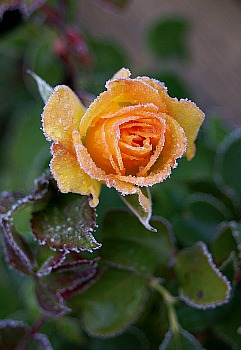Free gardening gloves when you spend $75.00 or more!
Just when we thought that spring was definitely here and settled in… Wham! Cold temps are popping up here and there…even in the south.
Over the last few weeks, many of us woke up to find frost on the lawn and our plants looking decidedly cold and miserable. Warmer temperatures are back again but who knows for how long this time.
If you were caught in this year’s cold snap, it can be hard to tell which of your plants are goners and which will live to fight another day. Here are some tips and pointers that should be helpful if you are still anxious about some of your plants.
Even if you escaped the worst of these freezes this time, you might not be so lucky in the future. Keep some of these points in mind and it might help you save some plants next spring!
Do NOT fertilize any plant with freeze or frost damage until it has put on some new growth. In fact many plant experts will tell you not to fertilize frostbitten plants until next winter. Why? Because the nitrogen in fertilizer can cause the plant to leaf out too quickly, adding even more stress to the trauma it is already trying to resist.
In most cases, trees and shrubs will begin to put on new growth within two to four weeks after frost damage. This is where Nature really needs our patience. There is a powerful temptation to start pruning as soon as we see frost damaged plants. Do not succumb to the temptation!
In fact, it is better to avoid any major pruning on frostbitten plants as they can take up to a year to return to their normal growth pattern, and pruning, like fertilizing, can add to the stress.That doesn’t mean you cannot trim away small areas of dried up and obviously dead foliage once the threat of frost is past and new growth is beginning to come back. Just say no to any major surgery.
However, perennials such as hostas and other delicate plants may show signs of severe burn. You can go ahead and clip them back as they will be putting on more new growth. Plus, decayed leaves and branches left on those plants will only attract annoying insects.
Remember to water your plants as necessary (you can allow a day or so of dry soil between watering, but no more – no need to further stress these sick plants). After a frost attack has passed, many plants will need water to help them re-leaf after the first tender leaves were lost to frost.
Again, be patient. Nature can take a while to help plants recover so fight the urge to do anything too drastic.

- cheryl's blog
- Log in or register to post comments







